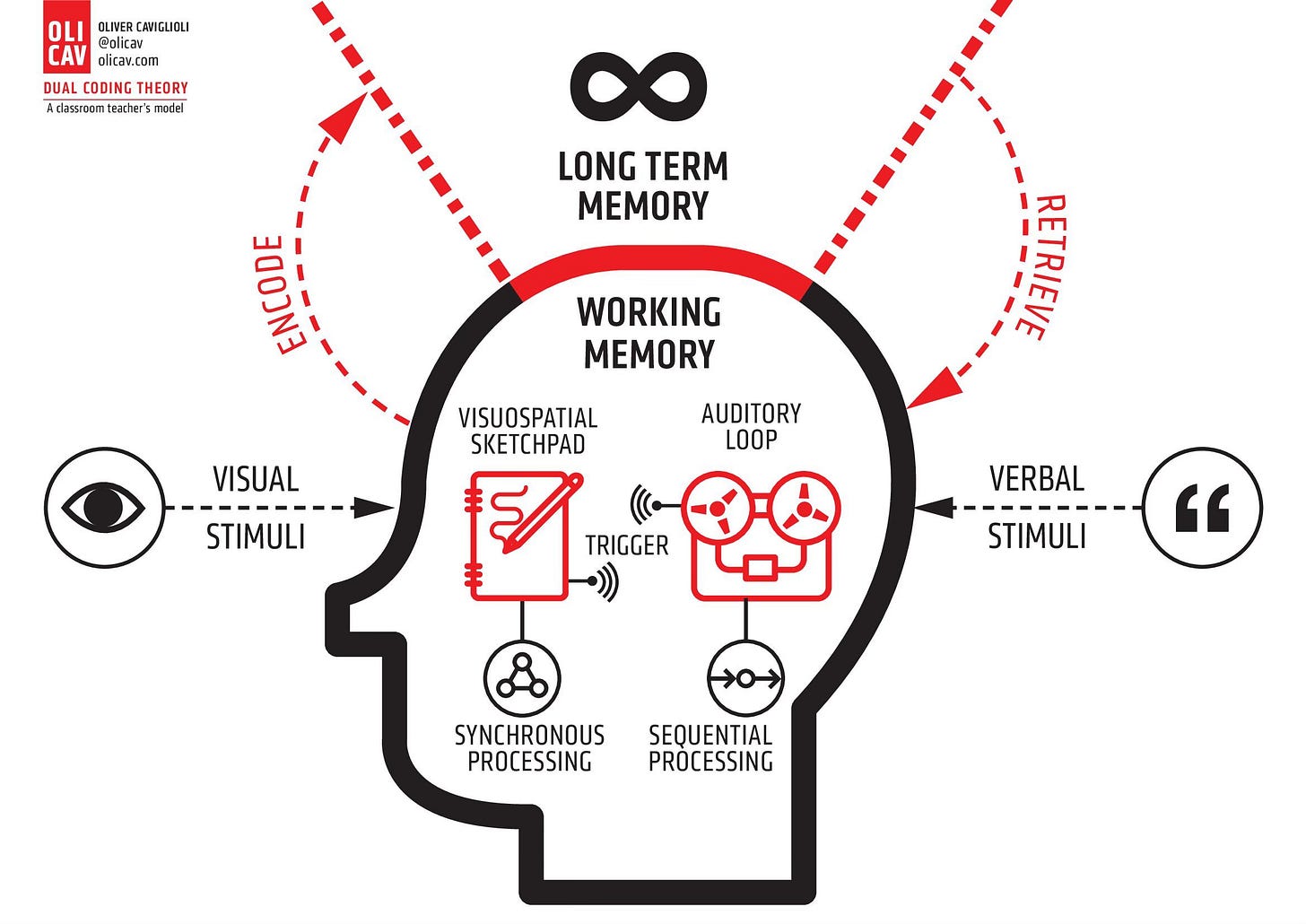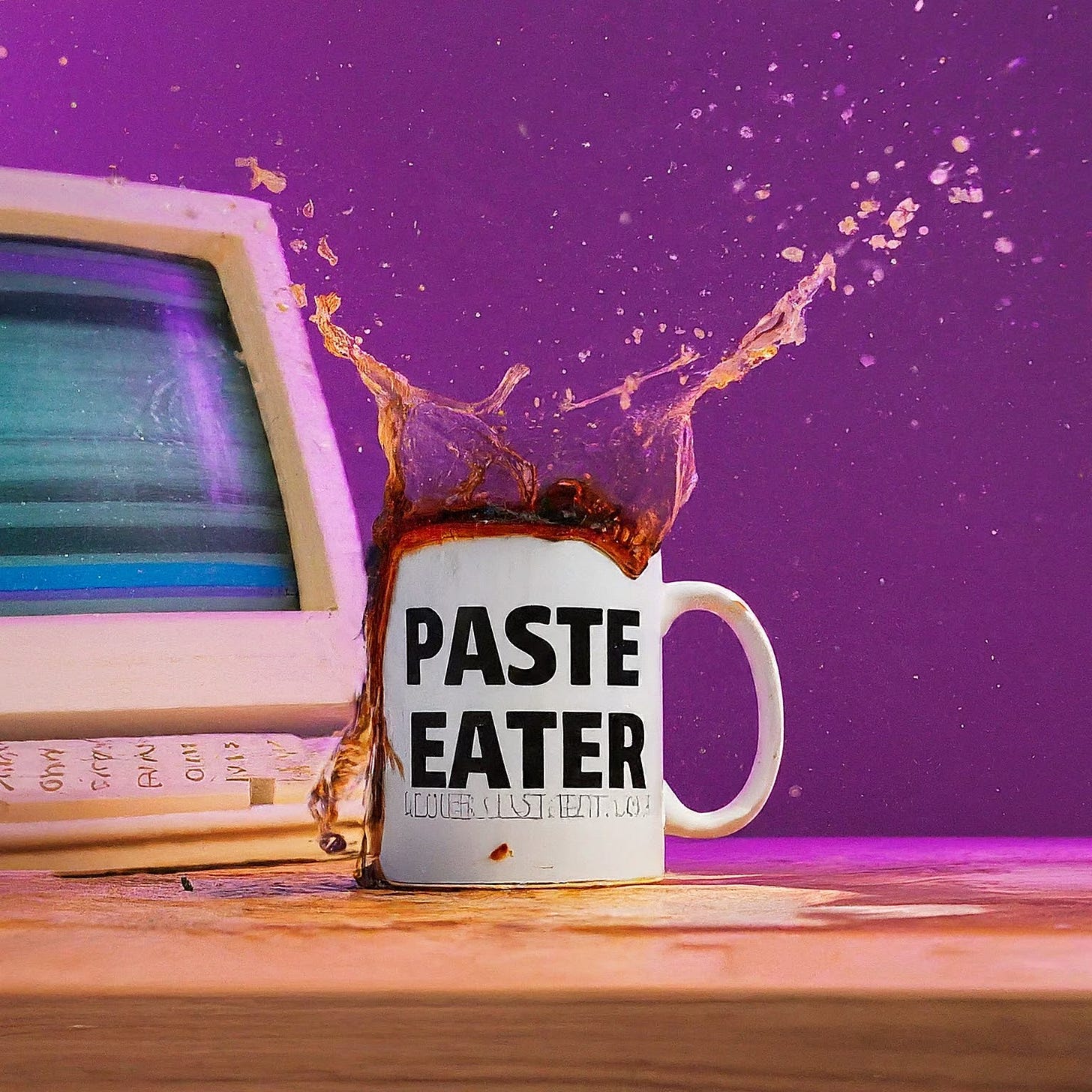🧠 What is Dual Coding Theory? (Hint: Not Computer Related.)
Hint: DCT deals with the brain, not computers.
This is my first voiceover for Substack. I haven’t recorded a voiceover since spring 2020, so I know I have room to grow with reading, recording, and mixing. 😬
Dual Coding Theory (DCT) has simple premises but wild implications—and nothing to do with computers. DCT proposes the brain processes information through two channels: the verbal and the nonverbal. Encoding the same information multiple ways improves understanding and retention. Applying DCT simply involves knowing the most effective way to present information.
The Big Picture. Education in the Information Age should address how the brain processes information. Knowing how we learn means never asking how to teach. Yet teaching lags behind cognitive science. It's policy over pedagogy, standardized tests over the testing effect, and rule following over research. Sometimes cognitive science seems counterintuitive, but that doesn’t mean it’s wrong.
Not Coding Coding. While the word "coding" sounds like computer science, no computers are involved here.
No Fad. First proposed by Allan Paivio in 1971, DCT has been documented and replicated for decades with easy classroom applications.
How It Works. DCT recognizes two channels for information: The verbal channel (logogens) includes the written and spoken language while the nonverbal channel (imagens) includes other senses and modalities (Imagery and Text 30).
Note: I've heard many synonyms for "channels" including structures, systems, and codes.
Since words require sequence (syntax), the verbal channel is linear. Since images do not require sequence, the nonverbal channel is a-linear.
These systems function independent, parallel, and interconnected (Imagery and Text 36-37). Our processing works both linear and a-linear.
Referential connections: When information moves across channels (from words to images or images to words).
Associative connections: When information moves within channels (from words to words or images to images).
Yes, but. "So this isn't a big deal. Does that mean we just add pictures to words? And isn't this just multiple learning styles?" The short answer is no and no.
More than adding pictures. In Dual Coding with Teachers, Caviglioli describes a study where images had a "detrimental effect" despite self-reporting images as useful (38). Images help, but if they distract or don't match, they hurt.
Learning styles is a neuromyth. Anyone can report being a visual learner, but empirical evidence for learning styles remains elusive. Nonexistent. DCT may add pictures, but it's not a learning style.
So What? As Paul Kirschner explains in Dual Coding with Teachers, encoding both verbally and visually “enables you to access more working memory capacity” (20). Increased working memory capacity leads to both better understanding and better retention.
Why should we work any harder to understand and remember information?
In Action. How do you apply DCT? Like many good ideas, principles drown in oversimplifications. Here's a bad paraphrase: pair words with images and images with words, depict steps and narrate processes, and transform notes to images.
Future posts will address specific classroom applications.
As I write and reflect about this topic, I’m in the process of slowly transforming my classroom.
Sources? While his 1991 essay "Dual Coding Theory in Education" proves valuable reading, I've come across several helpful books so far:
Sadoski, Mark and Allan Paivio. Imagery and Text: A Dual Coding Theory of Reading and Writing. Routledge, 2013. 2nd ed.
Caviglioli, Oliver. Dual Coding with Teachers. John Catt. Educational Ltd., 2019.
Caviglioli, Oliver. Organise Ideas: Thinking By Hand, Extending The Mind. John Catt. Educational Ltd., 2021.
Bell, Nanci. Visualizing and Verbalizing for Language Comprehension and Thinking. Gander Publishing, 2007. 2nd edition.
Update: Here’s my follow up, where I present five implications of DCT.
🎁 New to the blog? Check out my recent starter pack as well as a Google Drive Folder with FREE classroom resources! Also, The Honest School Times has your schooling satire.
🏆 Fan Favorites
✏️ Teach Writing Tomorrow
📓 Other Writing Tricks





